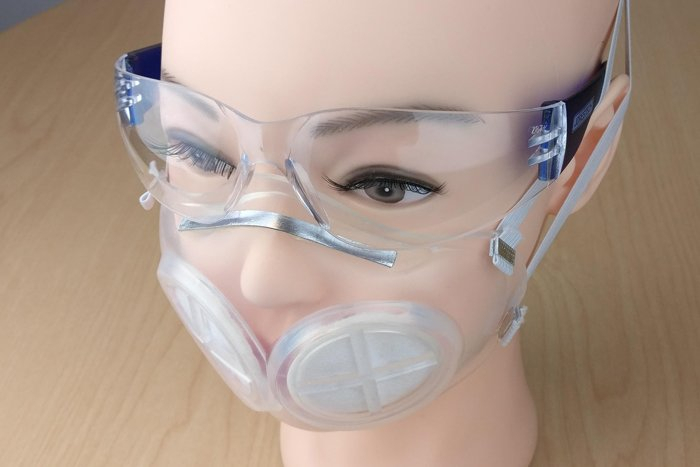The new prototype, designed by scientists at Harvard University and MIT, is a spin on the N95 mask used by frontline healthcare workers. N95 masks – a type of respirators that filters airborne particles – are tight-fitting, unlike loose-fitting surgical masks, and are made from polypropylene fibres that can filter out viral particles.
However, the majority of the mask is made from this polypropylene material, and since N95 masks are supposed to be discarded after each patient encounter or exposure to virus-laden aerosols, their innate disposability is a large part of the reason why N95 mask supply is seemingly under constant constraint in the upheaval of the COVID-19 pandemic.
"One of the key things we recognised early on was that in order to help meet the demand, we needed to really restrict ourselves to methods that could scale," says gastroenterologist Giovanni Traverso from Harvard-affiliated Brigham and Women's Hospital, who also teaches mechanical engineering at MIT.
"We also wanted to maximise the reusability of the system, and we wanted systems that could be sterilised in many different ways."
The answer, which is now undergoing its second round of development, is a reusable mask made from silicone rubber, capable of being worn again after sterilisation, and still offering the protection of N95 – in theory – via the use of one or two filters that can be inserted at the front of the mask.
In other words, the most important functional part of the N95 respirator – the polypropylene material that filters out at least 95 percent of airborne particles – is still there, but this alternative way of wearing it means much less one-time-use material needs to be manufactured before being thrown away.
At least, that's the supposed 'ideal' use case of N95 masks. In the grim reality of the pandemic and the surges in coronavirus patients it creates, healthcare workers around the world have been forced to innovate unproven ways of cleaning and reusing their own disposable personal protective equipment (PPE), or fashioning their own in-house replacements – simply because they don't know when the next batch of new masks will actually arrive.
For people trying to save lives on a daily basis, that's not good enough; it can put them, their patients, their families, and everybody else downstream at risk – a serious problem that could in part be mitigated by an experimental design like this.
"With this design, the filters can be popped in and then thrown away after use, and you're throwing away a lot less material than an N95 mask," says MIT materials scientist Adam Wentworth.
The mask system – called Injection Moulded Autoclavable, Scalable, Conformable (iMASC) – was designed with the help of computers, using 3D-modelling to simulate the behaviour and deformation of the silicon design when worn on different kinds of face shapes and sizes.
In the study, the developers estimate the rough cost of the masks could be as low as about US$7 each, with filters perhaps 50 cents each; after a little more than a dozen uses, iMASC could thus become a more economical option than N95 masks costing a dollar each.
To test iMASC wearability in real life, the researchers had 20 hospital workers try to fit the mask per the standard fit test required by the Occupational Safety and Health Administration (OSHA) for N95 masks. All 20 participants passed the fit test – indicating they had established a proper seal – and the mask also scored well on ratings relating to fit, breathability, and ease of filter replacement.
Various sterilisation techniques were also explored on the silicone material – including steaming, heating the masks in an oven, and soaking in bleach or isopropyl alcohol. Aside from minor differences in the feel of the silicone afterward, the masks showed no changes or signs of damage.
Based on initial feedback provided to the researchers, a second version of the mask has now undergone further testing, and if results can demonstrate that the replaceable filter system is effective at filtering viral particles too – something not tested in this initial proof-of-concept study – we could very well be looking at a new generation of PPE here. And not before time.
"When the virus started popping up in the US, we talked about the need for PPE, and identified really early on that there was going to be a large deficit within the United States as well as the world," first author and radiation oncologist James Byrne from Harvard and MIT told Fast Company.
"We really put our heads together to try to come up with something that was sustainable, and that's how we really came up with this reusable, scalable, conformable, flexible mask."
The findings are reported in BMJ Open.
ScienceAlert
More about: #FaceMask
















































